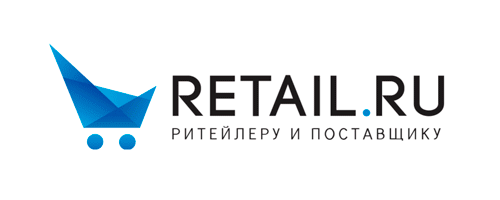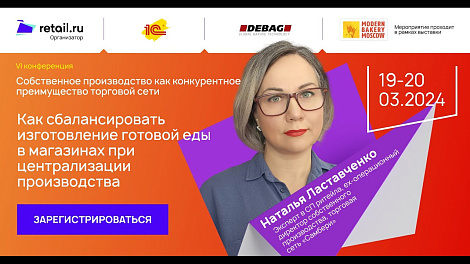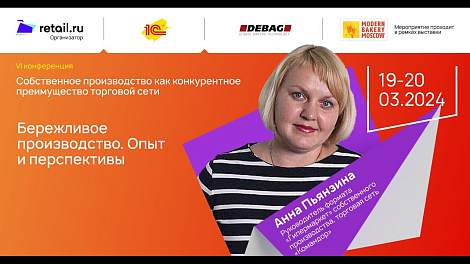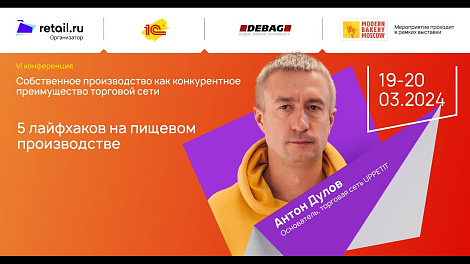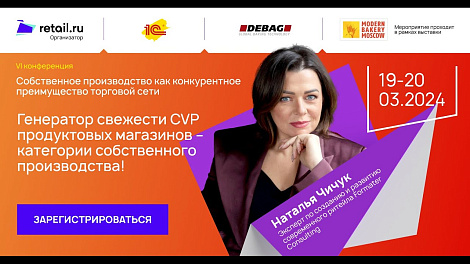Ernst, you have many years of experience in developing new formats of stores. How do you start to develop? What is most important in creating a format?
I would like to give an example of developing a new format store Albert Heijn To Go*. The chain began to think about the new format back in 1999. By that time I was 14 years in the chain on different positions and knew it from inside. At that point, the chain Albert Heijn had an unusual and dangerous positioning - the market leader with high prices. The stores were considered the most expensive in the Netherlands. Such a positioning is dangerous and not competitive. Any other more flexible and creative chain could just bankrupt Albert Heijn. However, in 2003 the chain had the pragmatism and courage to start a "price war" and one day bring down their prices by an average of 15%. This led to the fact that the order of prices across the market has stabilized and significantly decreased. In 1999 company Albert Heijn had to think seriously about creating a new format of convenience stores. I was put in charge of the new format. We examined the possibilities of opening a supermarket on the railway station in Utrecht. Netherlands Railways (NS) were willing to lease large areas of 400 sqm. at high rates. At that moment I had an idea: "Here, the place is successful, very traversed. But we do not need such a huge area! ". And this became the starting point of creating a new format. We knew that the main customers at the train station - are students and working people. And this location – is special - the people here are rushing home or to work, to school. And that means: they need "quick solutions", something ready-made and easy to purchase. Customers need basic range, without any frills, such as beer or groceries. Then I started thinking - what should this store be. Make a reduced copy of a large supermarket Albert Heijn had no sense. I'm sure that by making a little shorter range of a large supermarket – one can not create a new format. A reduced copy brings nothing new and unique; store will be expensive and unlikely to be successful. I began to think "multidimensional", in several directions: about the differentiation of customers, about formats in general and about the existing formats of Albert Heijn. At that time, the whole differentiation of the shops in the chain was only in the amount of retail space – city stores, medium-sized supermarkets and XL-supermarkets, and the only difference was in the amount of sales area. The most effective method, which has helped to create a new concept, was the answer a question - what awaits us in the future? In 1999, we started to make predictions - what kind of competition and what the situation may be in 2015 in the Netherlands. In this forecast we have tried to take in account changes of our customers within 15 years. At that time, not all married women worked. Today, everybody makes careers, which means very little time is left for shopping and household. We discussed not the format and square meters, but a method of organizing of everyday life. And we found its specific - convenient small shop where the customer can quickly and easily buy products that he need at the moment. Normal life and its aspects - that was a starting point for the development of a new format. We have developed a scheme of the new store: one makes a shopping in three minutes, and one is provided food and drinks for the next 16 hours. What are the shops Albert Heijn To Go?
The first store Albert Heijn To Go is opened in 2001 at the railway station in Utrecht and gained enormous popularity. We offered a narrow, new and specialized product range. It can be described as "fast products + fresh food + take out ". At Albert Heijn To Go customers will find plenty of fresh fruits and vegetables, coffee and tea, panini and sandwiches, croissants (baked off in the store), beverages, Smoothie (milk and fruit shakes, which first started to be sold by this chain) and a large choice of ready dishes. Particular attention is paid to washed and chopped vegetables - it is so convenient for dinner. As well as prepared and specially packed (already with a fork) salads - perfect for a quick lunch in the office. An average sales area has 100 sqm, it is well planned. Here is minimum island equipment - maximum 2 or 3 low racks in the center, including fruit and vegetables. Along the perimeter the cooling equipment is to be found with the main assortment. Two main areas are marked in the store - food for lunch (located closer to the entrance) and "food for later" - a little deeper in the sales room. Also, for convenience products are categorized by time: for breakfast, lunch and dinner. There is also a set of essential items - toothpaste and toilet paper.
We intentionally did a strong emphasis on the excellent "fast food" in the new chain. Food Market Trends are as such - the traditional 70% of the market, which kept by food stores, will soon be reduced. The share of food service from 30% will seriously increase. For example, in the U.S., this is 50% to 50% already. It also shows the changes in the lifestyle ordinary customer. If Albert Heijn did not include ready meals in its range he would have lost a huge share of the market in the future! Another advantage of Albert Heijn To Go - quick sale, just three minutes. The customer here has no stress - either physical (small store), or, most importantly, the mental (difficulty, dilemma of choice). This is an easy shop also in terms of payment for the purchase. A lot of space is dedicated to check outs. These are small counters with a “face to face” principle with most experienced and agile cashiers. Customers in the store enjoying a range, simplicity and quality – these are the fundamental properties of the new format. How successful the new format of Albert Heijn To Go?
Here are some figures. The average profit in food retail in the Netherlands is approximately 200-250 euro per sqm. per week. Albert Heijn To Go has a small area with a good traffic. We estimate that at least 10% of all passing through the station people will drop by and purchase something. For the stores situated on expensive rental locations – sales volume and the cost level are crucial. At Albert Heijn To Go rental rate is five times higher than at conventional supermarkets, more qualified personal how are also paid almost twice as much. So our main goal was high level of sales per one sqm. Big traffic and the correct assortment of 800 SKU allow you to earn 500 euro, and even 1000 euro in some stores. This is not a 2% netto margin, as in conventional supermarkets, but 8 to 15% of netto profit. In fact, every family needs no more than 250 products. All unnecessary - idle and collect dust. We could not afford such inefficiencies.
What formats are currently working at the Albert Heijn?
Since the late 1990's Albert Heijn made a serious homework and formatting. Now the chain has 35% of a market share in the Netherlands and operates in four formats, completely covering the inhabitants of each city. Albert Heijn XL - a large supermarket, with a wide range of a good quality - 30 thousand SKU. Here customer comes 1-2 times a month. The average bill - 40 euro. Albert Heijn Superstore offers more than 20 thousand SKU standard range. Visit - once a week. The average bill - 20 euro. Range Albert Heijn Supermarket - 10 thousand SKU, average bill of 10 euro. This store is next to the home, where customer returns every three days. Albert Heijn To Go - 800 SKU, average bill is 5 euro. Assortment: ready-made meals, ready solutions, products, needed now, something that you just miss for lunch, dinner, party. Goods that will help you comfortably survive until the next shopping trip. Thus, Albert Heijn attracts customers at different moments of their daily life. In these formats, there are differences not only in size, role and the average check, but also in positioning, in the needs of customers. I am currently working as a consultant on strategies by Jos de Vries The Retail Company for national and multinational retail chains. I observe a similar trend of multi format development in many countries, including in Eastern Europe: Poland, the Czech Republic. The trends are the same - consumers want more freedom, quality, they have little time, they are busy, want to buy easy, fast and delicious. In Russia during the crisis, many have to learn a new format - discounter ...
Discounter - it is a dangerous topic. In general there are very few 100% discounter chains in the world. This means range of 400 SKU. As a customer would you be satisfied with a shop with such a narrow range? There are other ways in retail to attract low income buyers. For example, Albert Heijn has four types of “private label” goods. Euroshopper - the cheapest products from Albert Heijn. Other categories of customers can choose the more expensive and bio-products. Due to this positioning private label Albert Heijn easily compete with discounters, and with specialized expensive shops. Also, I believe that the hypermarket format in the future will not be in great demand. This is "anonymous", non personified format, the customer getting lost in here. You can see a global trend: people want to buy goods in a pleasant, emotionally "warm" store, people want to hear from the sellers' Good morning! ". The crisis - it is just the best time to review the business model. All unnecessary and outdated should be removed. I understand that many non-discounters have hit in attempts to achieve lower prices. But in that they lack relevance, significance. The near future trend - a lively, energetic, good health, healthy food, the future of the children, honest, legitimate products - all this will be increasingly important. Therefore, I believe that the model of only discounter with a concentration on low prices has not a great future. Trading business model should be more creative! Irina Bolotova specifically for the "Commercial equipment in Russia", August 2010 * Albert Heijn B.V. – supermarket chain, founded by Albert Hein. This is the oldest part of AHOLD group of companies, the main player on the Dutch market. The chain has more than 600 supermarkets.
